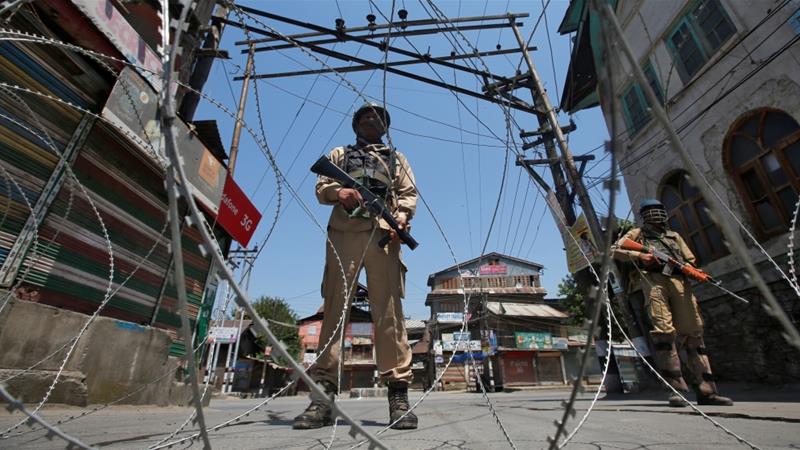News Analysis |
Pakistani and Indian military officials in a rare move have agreed to avoid artillery exchanges in the disputed Himalayan region of Kashmir, where several soldiers and civilians have died this month.
The Pakistani military said in a statement late Tuesday that the understanding was reached between the sides during a special hotline contact involving the director generals of military operations. It says both sides “agreed to undertake sincere measures to improve the existing situation, ensuring peace and avoidance of hardships to the civilians along the borders.”
It says both sides agreed to fully implement the 2003 cease-fire agreement “in letter and spirit forthwith and to ensure that henceforth the cease-fire will not be violated by both sides.” The understanding was reached between the two director generals of military operations who made a “special” hotline contact on Tuesday to review the prevailing situation along the Line of Control (LoC) — a de facto border that divides the disputed Kashmir valley between the two countries — and the Working Boundary, which separates the two neighbors.
“Both DGs MO (director generals of military operations) reviewed the prevailing situation along the LoC and the Working Boundary and mutually agreed to undertake sincere measures to improve the existing situation ensuring peace and avoidance of hardships to the civilians along the borders,” a statement from Pakistan army’s media wing said.
Read more: Line of Control crisis: Two women killed by Indian firing
The two officials, the statement added, agreed to “fully implement the ceasefire understanding of 2003 in letter and spirit forthwith and to ensure that henceforth the ceasefire will not be violated by both sides.”
The two sides also agreed that in case of any issue, restraint would be exercised and the matter would be resolved through utilization of existing mechanisms of hotline contacts and border flag meetings at local commander’s level.
Tensions between the two nuclear neighbors have failed to ease after 19 Indian soldiers were killed in Indian-held Kashmir in September 2016 by militants India has claimed had links to Pakistan. Since then, over 150 civilians and troops from both sides have been killed in border clashes.
Kashmir, a Muslim-majority Himalayan region, is held by India and Pakistan in parts and claimed by both in full. A small sliver of Kashmir is also held by China. The two countries have fought three wars — in 1948, 1965 and 1971 — since they were partitioned in 1947, two of which were fought over Kashmir.
Also, in Siachen glacier in northern Kashmir, Indian and Pakistani troops have fought intermittently since 1984. A cease-fire came into effect in 2003. Some Kashmiri groups in Jammu and Kashmir have been fighting against Indian rule for independence, or for unification with neighboring Pakistan.
According to Pakistan Ministry of Foreign Affairs, in 2018, the Indian forces have carried out more than 1050 ceasefire violations along the Line of Control and the Working Boundary, resulting in the deaths of 28 innocent civilians, while injuring 117 others. This unprecedented escalation in ceasefire violations by India is continuing from the year 2017 when the Indian forces committed 1970 ceasefire violations.
Read more: Pakistan asks for release of prisoners from India
The region of Kashmir is a flashpoint between the two nuclear-armed powers of South Asia. The dispute began when during the partition of the British occupied subcontinent, the refusal of the area’s hereditary ruler Hari Singh to comply with his people’s wishes led to a rebellion.
Faced with losing his freedom to a people’s army aided by tribesman from across the border, the ruler acquiesced to India in return for military aid. This led to a war between newly found India and Pakistan and later on the division of Kashmir into Azad Kashmir and IOK.
After the UN ordered a ceasefire and subsequent UN resolutions calling for a plebiscite, India backtracked from its earlier agreements and started a campaign of militarization to subjugate the part of Kashmir in its control. The Kashmiri people continued their efforts for self-determination.
However, an armed component of the peaceful self-determination campaign emerged in 1987 after the Indian government rigged elections in IOK to stop pro-Independence candidates from winning. The armed struggle continued despite increased Indian brutality that turned Kashmir into the world’s one of the most militarized region.














